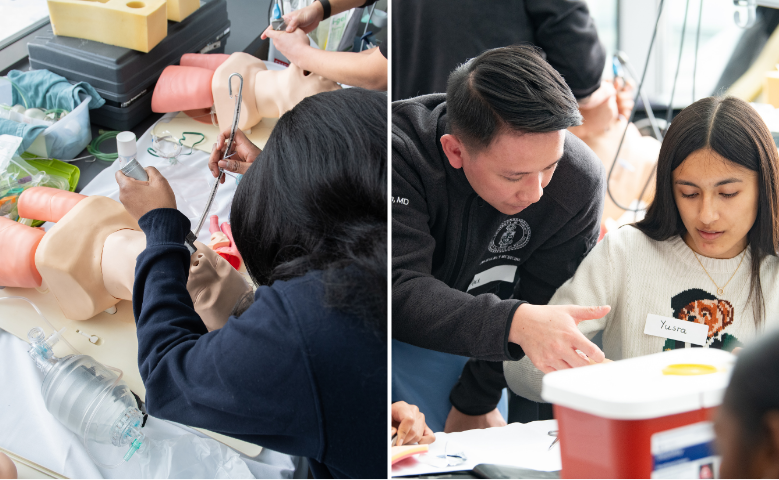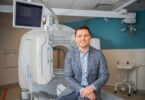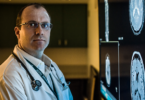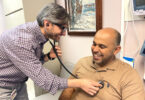The journey towards working in health care isn’t always linear or easy. Though despite obstacles and systemic barriers some may face, many opportunities and pathways exist that can lead to a successful career.
That was the message of the inaugural Emergency Room (ER) Discovery Day held at Sunnybrook Health Sciences Centre last week. Hosted in partnership with the University of Toronto (U of T) Temerty Faculty of Medicine’s MedLinx program, Sunnybrook’s President’s Anti-Racism Taskforce and Emergency Medicine faculty, residents and fellows, 30 students from high schools across the Greater Toronto Area spent their PA Day learning about different career paths and professions that serve the hospital’s emergency department (ED).
For Dr. Saswata Deb, a Sunnybrook emergency physician and lead organizer of the event, the event was years in the making and the motivation behind the ER Discovery Day was personal.
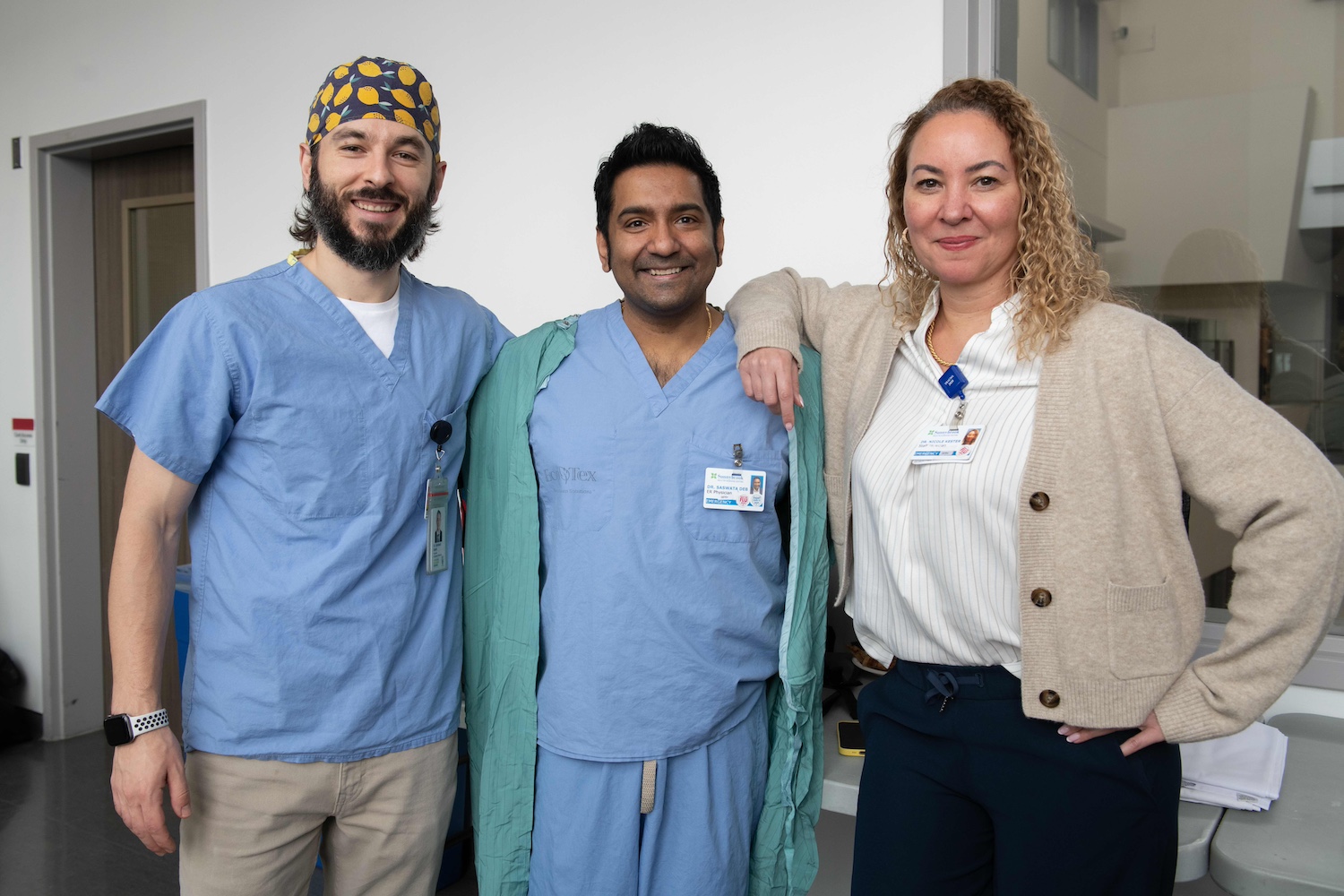
Dr. Saswata Deb (centre) with ER Discovery Day facilitators and emergency medicine physicians Dr. Gerhard Dashi and Dr. Nicole Kester
“My family immigrated to Canada when I was 10, and we faced various challenges. Things like language barriers, racism and financial hardship,” he explains. “Organizing an event like this has been a long-standing goal of mine since becoming a physician, and I am thrilled to see it come it life.”
The ER Discovery Day students came to Sunnybrook through MedLinx, a U of T outreach program specifically designed to offer high school students who come from underrepresented communities or who experience socio-economic challenges hands-on opportunities and mentorship to explore careers in health care.
The students started the day with a tour of Sunnybrook’s ED and trauma bay before hearing from a panel of interdisciplinary health-care professionals about their journeys to working in health care. In the afternoon, they got the chance to learn some hands-on, life-saving skills.
Dr. Deb shares some of what students got to learn, the stories and experiences that were shared, and what’s next for ER Discovery Day:
Did the students hear from people who work in Sunnybrook’s emergency department?
We brought together representatives from various fields within and beyond the emergency department who work collaboratively to care for patients every day, including physicians, nurses, physiotherapists, social workers, occupational therapists and hospital administrators. Many of the speakers come from backgrounds similar to the students, including those who are immigrants or children of immigrants, from racialized groups or who grew up with socio-economic challenges. The goal was that the students could be inspired and motivated by people working in health care who look like them, and who went through similar experiences to get to where they are.
What kinds of hands-on activities did the students try out?
There were five stations the students got to rotate through: CPR, which is a skill that can actually save a life; suturing, to learn how to sew cuts and wounds; Stop the Bleed, which is another life-saving skill if someone has massive bleeding; ultrasound, where they got to see what the heart looks like on an ultrasound which I always found fascinating; and intubation, which is how to insert a tube into someone’s throat to keep them breathing. Hopefully they came away from those inspired from having learned something new or a life-saving skill.

Students participate in a Stop the Bleed demonstration.
What do you hope the students got out of the event?
I’m hoping that the students see that, one, health care is not just about doctors or nurses. There are lots of different professions and lots of opportunities. Two, the stories that were shared by people today will inspire them that they can still be successful despite systemic barriers. And three, from these different hands-on sessions, they can walk away with some life-saving skills.
Was anyone else involved in organizing the day?
To see this come to fruition is a testament of the work of so many who have been involved in bringing this day to life. There’s Sunnybrook staff and leadership; physicians from internal medicine, surgery and the ED; members of the Sunnybrook’s Presidential Anti-Racism Taskforce; U of T’s Office of Inclusion and Diversity; Emergency Medicine residents and Emergency Medical Services. They all came together to collaborate and volunteer their time. It’s very exciting for me to see this come alive after a vision that I’ve had for almost 20 years.
What’s next for ER Discovery Day?
We want to do this regularly, and we want to grow this program even bigger. We want more students to participate. Demand is quite high, so our vision is to expand this, and we can only do this with all the support from all my colleagues and all the partners that are involved. And we hope that in the future there will be even more support and more resources for us to continue to grow.


